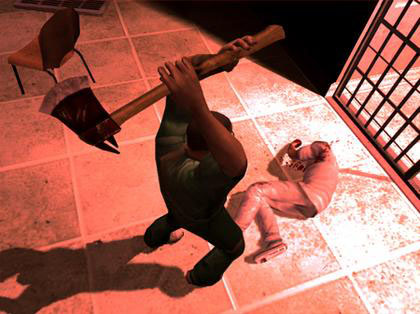
Members of the game industry were not quite sure why 'Manhunt 2' was given the full ban by the BBFC, as the levels of violence were no greater than many other games that line the shelves in game shops, and it's also claimed the violence is watered down compared to that featured in countless horror films that all receive classification. Digging a little deeper into this story, I discovered that the primary objection by the BBFC was that the Wii version made full use of the wii-mote. Now instead of just point and click executions, you actually get to stab the bad guys. Or hack then to bits with an axe, or you can use the wii-mote to saw their head off. No longer are you sat calmly behind a desk dispensing your own brand of justice, your physically going through the motions, swinging your virtual chainsaw around your living room. And you thought the Wii was a family console.
The BBFC believe we are training the next generation of serial killers, who are right now honing their assassination techniques and stealth skills. As gaming becomes more immersive are we really likely to see an increase in violent crime? I think not, nor is here a place for the game/violence debate.But the notion of violent interaction with a mouse and keyboard being acceptable, while the exact same interaction acted out physically is not, is an interesting topic for debate, opening up questions about physical interaction and society




